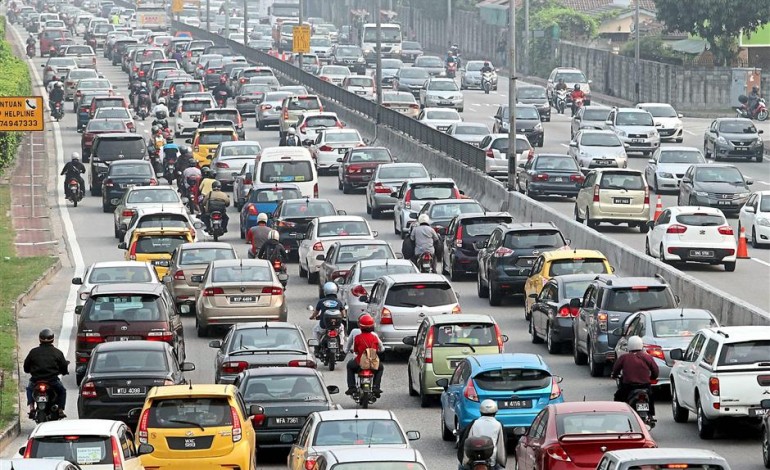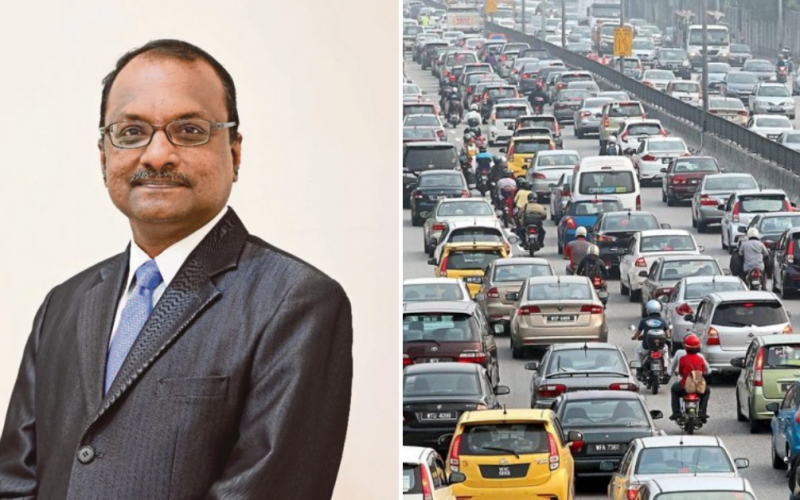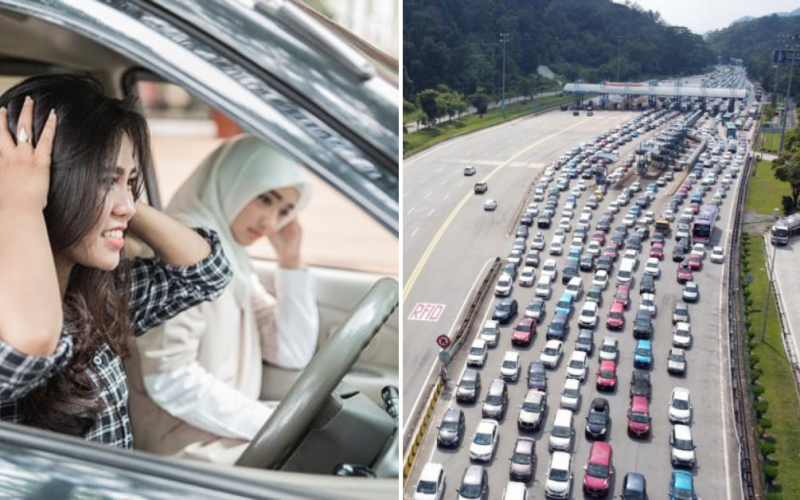You don’t have to be behind the wheel of a vehicle to notice that the traffic situation in Malaysia appears to have worsened considerably over the past number of months. And that comes as to no surprise, given the nation’s steady trek towards endemicity and employees finally returning to physical workplaces en-masse. However, you may be surprised to learn that there happens to be another factor leading to the ever worsening traffic congestion experienced locally.
There are more registered vehicles in Malaysia than there are people in Malaysia
From 2021 onwards, there have been more vehicles registered in Malaysia than there are actual Malaysians living in the country. That’s right, the number of registered vehicles on our roads have now officially outnumbered the country’s entire population, according to road safety expert Professor Dr Kulanthayan K.C. Mani of Universiti Putra Malaysia.
As of last year, he claims that there were as many as 33.3 million vehicles on local roads, while the total number of Malaysians in the country came in at only 32.6 million people.
In speaking with the New Straits Times, Dr Kulanthayan said that of the 33.3 million vehicles registered…
- 47.3% were private cars
- 46.6% were motorcycles
- … while the remainder comprised of buses, taxies, and lorries.
Given the disparity between the increase of vehicle registrations as compared to the Malaysian population, the issue with traffic congestion in the country is only expected to worsen in the years to come. Dr Kulanthayan points out that between 2019 to 2021, the Malaysian population recorded only an increase of 300,000 to 400,000 per annum.

This pales in comparison with the rise in vehicle population between the same time frame, which saw the number of vehicles on Malaysian roads grow from 31.2 million in 2019 to 33.3 million in 2021. That’s an increase of about 1 million newly registered vehicles per year!
“For the first time ever, in 2021, the trend of vehicle population outpaced the human population. Over all these years, it has always been the reverse.
“The vehicle population now is high. If this trend continues yearly where vehicles are rising to the tune of one million, then we are going to face even more horrendous traffic congestion,” he told the paper.
And while he has adopted a wait-and-see approach regarding the current traffic situation owing to the public holiday period and peak hours, Dr Kulanthayan, who is also chairman of the Global Alliance of NGOs for Road Safety board of directors, said that the current traffic situation could be indicative of a more inherent concern if it continues to persist.
Why the increase in vehicle ownership?
Among some of the potential motivating factors for the recent spike in vehicle registrations can be attributed to the introduction of the automotive sales and services tax exemption, which took place in June 2020 under the National Economic Recovery Plan (Penjana) stimulus package. It continues to remain in effect and has been extended until 30th June 2022.

As a consequence, the Professor says that this has motivated more consumers to purchase vehicles of their own, or ones that they do not need, in fear of missing out on the savings offered by the tax exemption. The situation could also be further exacerbated by an uptick in the number of gig-economy employees, especially those in the e-hailing sector, during the Movement Control Order period.
What’s more, the public’s fear of contracting COVID-19, compounded by a lack of confidence in the local public transport infrastructure could also push them to turn to private vehicles for mobility instead.
What steps can be taken to mitigate the number of vehicles?
To remedy the situation at hand, the Professor recommends that the government steer clear of constructing new highways to abate the traffic situation, but approach the problem by shifting funding towards improving the local public transport infrastructure. He has also advocated for more rail-based public transportation systems, given the advantages they have over road-based public transport facilities such as busses as trains do not face issues with congestion and punctuality.

He has also urged employers to consider implementing work-from home policies on a rotational basis to reduce traffic congestion on major roadways created as a result of work commutes.
“If every employer decides on this way of work, we may just be able to reduce up to 20 per cent of traffic at any time.” he said, adding that the move could also free up parking space.
As for Malaysians themselves, Dr Kulanthayan hopes that more citizens will adopt changes to their behaviour and routine by walking to their desired destinations, if adequate pedestrian infrastructure is available.
What are your thoughts on this?
Tap here to give us a ‘Like’ on Facebook and stay up-to-date on the latest news!
Also read: Malaysia ranks 8 out of the top 10 most stressful countries to drive in, and we can totally relate








